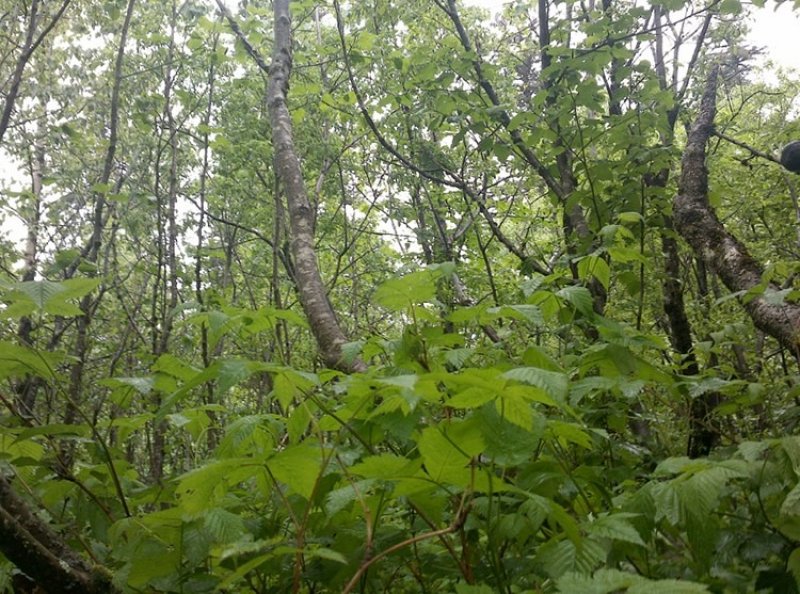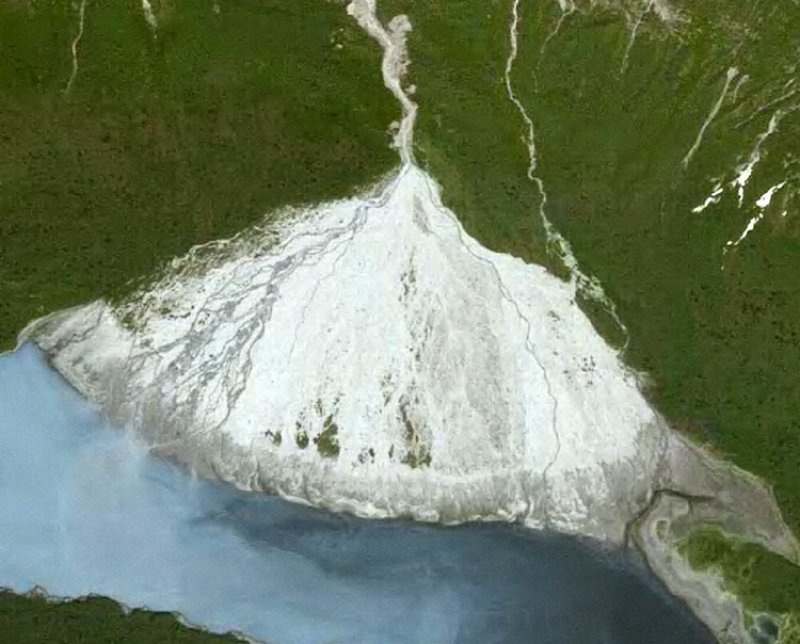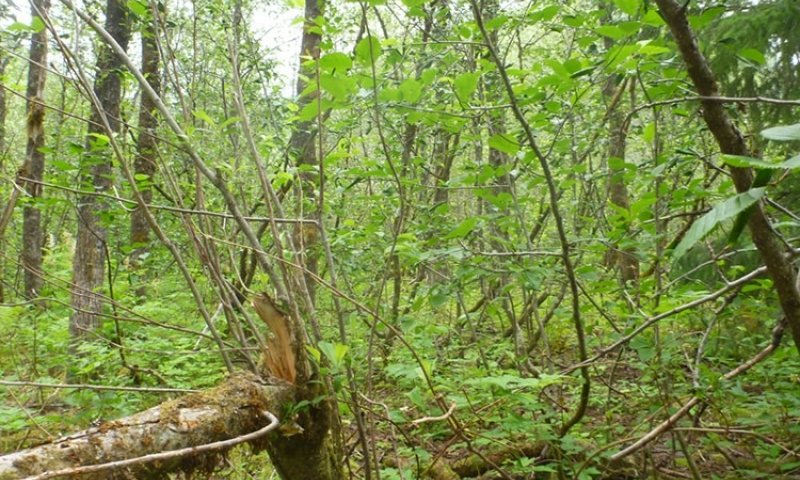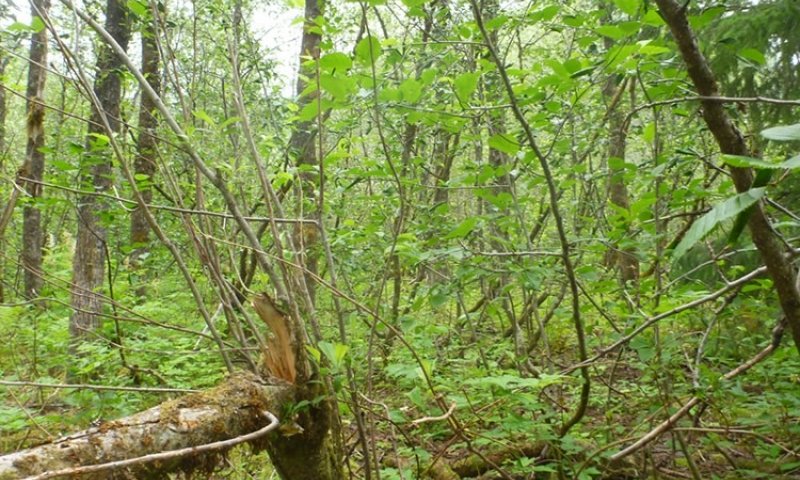

Natural Resources
Conservation Service
Ecological site F220XY430AK
Maritime Forest Sandy Plain Alluvial Fan
Last updated: 6/05/2025
Accessed: 12/21/2025
General information
Provisional. A provisional ecological site description has undergone quality control and quality assurance review. It contains a working state and transition model and enough information to identify the ecological site.
MLRA notes
Major Land Resource Area (MLRA): 220X–Alexander Archipelago-Gulf of Alaska Coast
The Alexander Archipelago-Gulf of Alaska Coast area consists of a narrow arc of islands and lower elevation coastal mountains in the Southern Alaska Region. This area spans from the Alexander Archipelago in southeastern Alaska, north and west along the coast of the Gulf of Alaska and Prince William Sound, and further west to the southern tip of the Kenai Peninsula and the northeastern islands of the Kodiak Archipelago. The area makes up about 27,435 square miles (USDA 2006). The terrain primarily consists of low to moderate relief mountains that are deeply incised. Throughout the area glaciers, rivers, and streams have cut deep, narrow to broad valleys. The broader valleys have nearly level to strongly sloping flood plains and stream terraces. Alluvial and colluvial fans and short footslopes are common in the valleys along the base of the mountains. Rocky headlands, sea cliffs, estuaries, and beaches are common along the coast.
This area includes the Municipality of Juneau, Alaska's capital, and a number of smaller coastal towns and villages. Federally administered lands within this MLRA include Admiralty Island National Monument and part of Misty Fjords National Monument, Tongass National Forest, Chugach National Forest, and Glacier Bay, Wrangell-St. Elias, and Kenai Fjords National Parks and Preserves. The southern terminus of the Trans-Alaska Pipeline is in Valdez.
During the late Pleistocene epoch, the entire area was covered with glacial ice. The numerous fjords of the Alexander Archipelago and Prince William Sound were formed chiefly as a result of glacial scouring and deepening of preglacial river valleys. Most glacial deposits have been eroded away or buried by mountain colluvium and alluvium, which cover about 90 percent of the present landscape. The remaining glacial and glaciofluvial deposits are generally restricted to coastal areas. During the Holocene epoch, volcanic activity within and adjacent to this area deposited a layer of volcanic ash of varying thickness on much of the landscape in the southeastern and northwestern parts of the area. Paleozoic, Mesozoic, and Lower Tertiary stratified sedimentary rocks and Cretaceous and Tertiary intrusive rocks underlie much of the area and are exposed on steep mountain
slopes and ridges (USDA 2006).
The dominant soil orders in this MLRA are Spodosols, Histosols, and Entisols. Soils in the area typically have a cryic soil temperature regime, an udic moisture regime, and have mixed minerology. Spodosols are common on mountains and hills having been formed in gravelly or cobbly colluvium, glacial till, and varying amounts of silty volcanic ash. These Spodosols commonly range from shallow to deep, are well to somewhat poorly drained, and typically classify as Humicryods or Haplocryods. Histosols that are poorly to very poorly drained occur on footslopes, discharge slopes, and valley floors. These wet histosols commonly classify as Cryosaprists, Cryohemists, and Cryofibrists. Histosols that are well drained occur on steep mountainsides. These dry Histosols commonly classify as Cryofolists. Entisols are common on flood plains, stream terraces, and outwash plains having been formed in silty, sandy, and gravelly to cobbly alluvium. These Entisols are generally deep, range from well to somewhat poorly drained, and commonly classify as Cryaquents and Cryofluvents. Miscellaneous (non-soil) areas make up about 23 percent of the MLRA. The most common miscellaneous areas are avalanche chutes, rock outcrop, rubble land, beaches, river wash, and water.
This area represents the northern extent of the Pacific temperate rainforest and is characterized by productive stands of conifers. Western hemlock and Sitka spruce are the dominant trees on mountains and hills at the lower elevations. Due to warmer temperatures, western red cedar and Alaska cedar are more prevalent in the southern part of the area. Black cottonwood and mixed forest types occur on flood plains. Areas of peat and other sites that are too wet for forest growth support sedge-grass meadows and low scrub. The transition to subalpine and alpine communities typically occurs at elevations between 1500 to 3000 feet (Boggs et al. 2010, Carstensen 2007, Martin et al. 1995), which characterize the vegetation of the Southern Alaska Coastal Mountains area.
For many decades, logging, commercial fishing, and mining have been the primary industrial land uses throughout much of the area. In recent years, changes in public interests, land use policies, and timber economics have contributed to a significant decline in the timber industry. Commercial fishing continues to be an important industry and most communities support a fleet of boats and fishing related facilities. A number of mines operate in the area and others have been prospected and proposed. Tourism and wildland recreation are becoming increasingly important. Subsistence hunting, fishing, and gathering provide food and a variety of other resources to local residents and remain the principal economy for residents of remote villages.
Ecological site concept
This site occurs on alluvial fans and floodplains and forms on coastal plains adjacent to mountainous terrain. These broad, low-gradient slopes rarely flood, but when high-intensity flooding does occur, primary succession takes place on newly deposited alluvial sediments. Soils are very deep and range from sandy-skeletal to coarse loamy and as a result soils are well-drained. Soils are udic or aquic udic.
This site supports a reference state comprised of three community phases, driven by geomorphic processes that result in the formation of alluvial fans. The reference community phase is represented by an open broadleaf forest community, the presence of which is dictated temporally and spatially by time since alluvial fan formation. Large depositional events have the potential to uproot woody species, resetting the successional process. A colonizing low-shrub community comprised primarily of Drummond’s mountain-avens, Sitka willow, and buffaloberry is established on the newly formed alluvial fan and is eventually succeeded by a closed tall shrub willow-alder community.
Associated sites
| R220XY426AK |
Maritime Shrub Low Flood Plain Other ecological sites are directly adjacent to or in close proximity to this ecological site. These ecological sites are typically differentiated by one or more criteria, including landform, landform position, associated soils, associated disturbance regimes, and the type and amount of extant plants. The most common associated ecological site is R220XY426AK. In areas where these ecological sites abut, ecotonal plant communities that have characteristics from each ecological site are common. |
|---|
Similar sites
| R220XY425AK |
Maritime Shrub Drainageway Ecological site R220XY425AK exhibits vegetative communities similar to those of site F220XY430AK. R220XY425AK has a flooding disturbance regime, whereas F220XY430AK does not. This leads to differences in the soil drainage class, runoff potential, depth to the water table, and flooding regime and results in different reference state communities from that of ecological site F220XY430AK. |
|---|---|
| F220XY427AK |
Maritime Forest Gravelly High Floodplain Ecological sites F220XY427AK exhibits vegetative communities similar to those of site F220XY430AK. F220XY427AK has a flooding disturbance regime, whereas F220XY430AK does not. This leads to differences in the soil drainage class, runoff potential, depth to the water table, and flooding regime and results in different reference state communities from that of ecological site F220XY430AK. |

Figure 1. Ecological site R220XY425AK exhibits similar community assemblages to those of site F220XY430AK, but site R220XY425AK is in drainageways and is subject to a different flooding regime.

Figure 2. Community phase 1.1 of ecological site F220XY426AK, on low flood plains. Site F220XY426AK exhibits similar community assemblages as those of site F220XY430AK.
Table 1. Dominant plant species
| Tree |
(1) Populus balsamifera |
|---|---|
| Shrub |
(1) Alnus viridis ssp. sinuata |
| Herbaceous |
(1) Streptopus amplexifolius |
Click on box and path labels to scroll to the respective text.
Ecosystem states
State 1 submodel, plant communities
| 1.1a | - | Large depositional event uproots poplar |
|---|---|---|
| 1.1b | - | Large depositional event uproots majority of woody vegetation |
| 1.2a | - | Time since depositional event and establishment of poplar trees |
| 1.2b | - | Large depositional event uproots shrubby species |
| 1.3a | - | Primary succession and increased shrub diversity following alluvial fan deposition |





